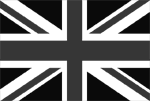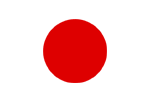ßÌZ~i[
7/2018- 73ú (Î), 10:30-12:00
- Wave Ngampruetikorn (Northwestern Univ.)
- Impurity Induced Anomalous Thermal Hall Effect in Chiral Superconductors
We report theoretical results for the electronic contribution to thermal transport for chiral superconductors belonging to even or odd-parity E$_1$ and E$_2$ representations of the tetragonal and hexagonal point groups. Chiral superconductors exhibit novel transport properties that depend on the topology of the order parameter, topology of the Fermi surface, the spectrum of bulk Fermionic excitations, and -- as we highlight -- the structure of the impurity potential. The anomalous thermal Hall effect is shown to be sensitive to the structure of the electron-impurity t-matrix, as well as the winding number, $\nu$, of the chiral order parameter, $\Delta(p)=|\Delta(p)|\,e^{i\nu\phi_p}$. For heat transport in a chiral superconductor with isotropic impurity scattering, i.e., point-like impurities, a transverse heat current is obtained for $\nu=\pm1$, but vanishes for $|\nu|>1$. This is not a universal result. For finite-size impurities with radii of order or greater than the Fermi wavelength, $R\ge\hbar/p_f$, the thermal Hall conductivity is finite for chiral order with $|\nu|\ge2$, and determined by a specific Fermi-surface average of the differential cross-section for electron-impurity scattering. Our results also provide quantitative formulae for interpreting heat transport experiments for superconductors predicted to exhibit broken time-reversal and mirror symmetries.
5/2018
- 51ú (Î), 13:30-
- ³Ø Sã (c`måwPD)
- Charged and uncharged vortices in augmented quasiclassical theory
The Hall effect of the superconducting vortices is still a standing issue of importance. Particularly the chiral p-wave superconductor with the vorticity antiparallel to the chirality differs drastically from the conventional s-wave one; The charging effect is crucially suppressed [1] and the core states are rather robust against the Born-type disorder [1, 2], which may result in a non-trivial flux flow state[3]. The transport phenomena in the clean superconductor can be investigated using the augmented Eilenberger theory, where particle-hole asymmetry important to the Hall effect is taken into account[4, 5]. However the self-consistent numerical calculation for a non-equilibrium system is a difficult problem as it stands[6]. Before this, the charging effect of the vortex is an issue related to particle-hole asymmetry in equilibrium, and it should be important for the sign-changing of the Hall effects[7]. In this talk, we discuss the following results on the equilibrium charge modulation in the vortex core using the augmented Eilenberger theory[8, 9, 10]. (I) To reproduce the charged and uncharged vortices of chiral p-wave superconductors which are obtained using the microscopic Bogoliubov?de Gennes (BdG) equation[11, 10]. (II) Impurity effects on vortex charges within the self-consistent Born approximation. The quasiclassical theory has an advantage in utilizing the self-energy over the BdG theory. (III) Balance relation with Bernoullifs force in the asymptotic region[12]. (IV) Asymmetric local density of states in the vortex core[6]. We will explain the formulations used in the above calculations as well.
[1] Y. Kato, J. Phys. Soc. Jpn. 69, 3378 (2000).
[2] Y. Masaki and Y. Kato, J. Phys. Soc. Jpn. 85, 014705 (2016).
[3] N. B. Kopnin and M. M. Salomaa, Phys. Rev. B 44, 9667 (1991).
[4] N. B. Kopnin, J. Low Temp. Phys. 97, 157 (1994).
[5] T. Kita, Phys. Rev. B 64, 054503 (2001).
[6] E. Arahata and Y. Kato, J. low Temp. Phys. 175, 346 (2014).
[7] G. Blatter, M. Feigelfman, V. Geshkenbein, A. Larkin, and A. van Otterlo, Phys. Rev. Lett. 77, 566 (1996).
[8] S. Hoshino and Y. Kato, ú{¨wï 2015 NHGåï (2015).
[9] M. Ohuchi, H. Ueki, and T. Kita, J. Phys. Soc. Jpn. 86, 073702 (2017).
[10] Y. Masaki and Y. Kato, J. Phys. Conf. Ser. 969, 012054 (2018).
[11] M. Matsumoto and R. Heeb, Phys. Rev. B 65, 014504 (2001).
[12] F. London, Superfluids: Macroscopic Theory of Superconductivity v. 1, Dover publications Inc.,NewYork, 2nd revise edition, 1960.

